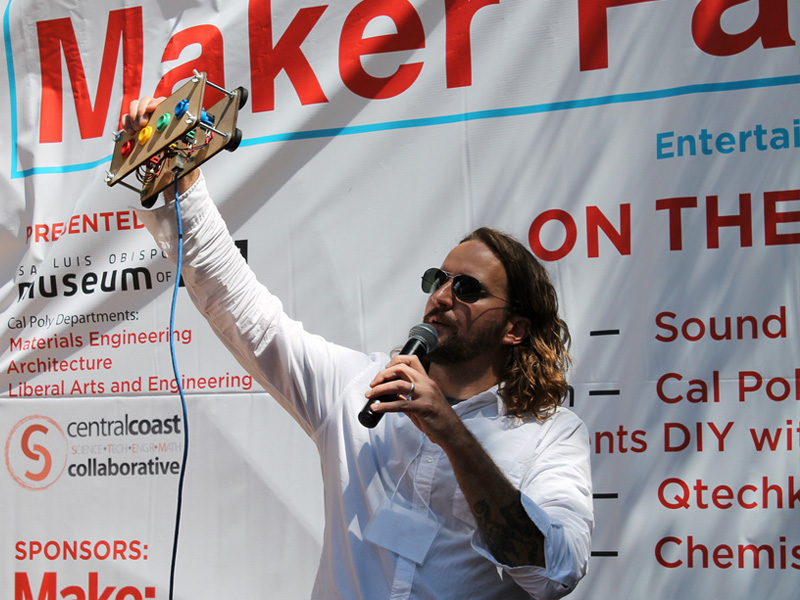
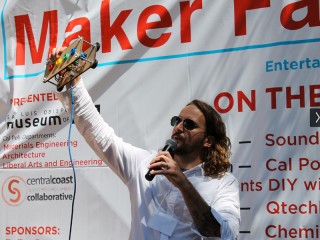
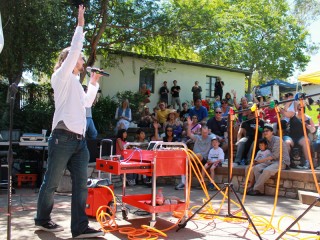
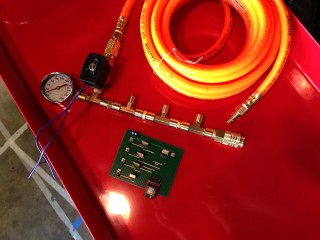
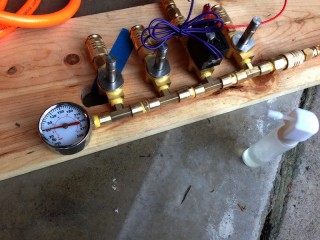
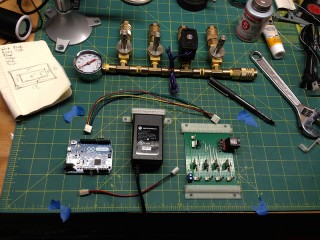
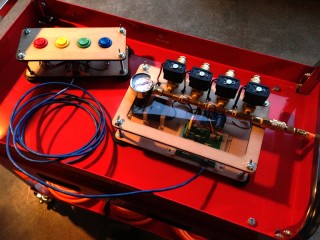
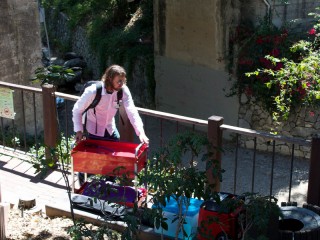

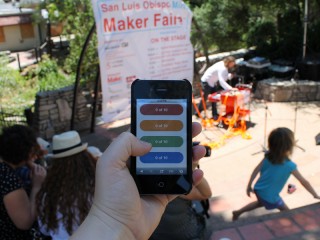
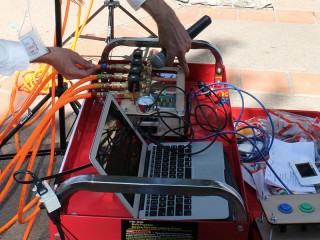

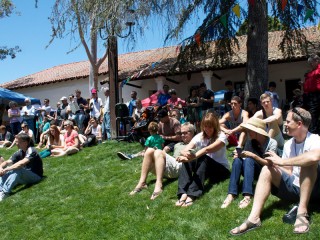
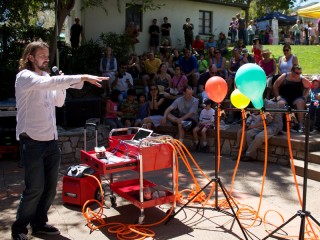
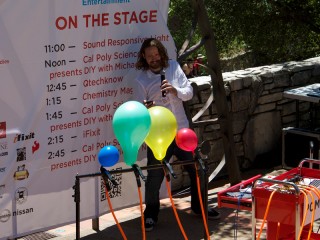
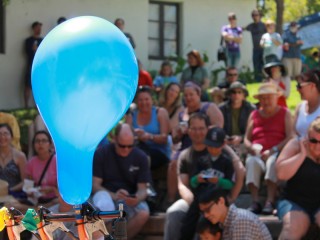
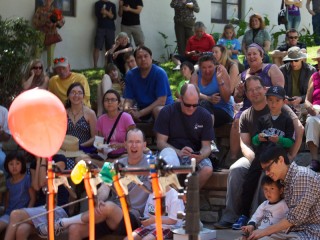
SLO Mini Maker Faire
It’s definitely a good sign when you get invited back to do another physical computing event. When Karen Lauritsen from Cal Poly’s Kennedy Library contacted me about creating a Science Café event for the first annual SLO Mini Maker Faire I jumped at the chance to be involved.
A few months before the event I took a day trip up to San Luis Obispo and met with Karen to discuss logistics, budget and checkout the space at Mission Plaza. Being an outdoor event, it was crucial to not only take measurements but also check noise levels, power and internet availability, as well as accessibility for loading equipment. I left with a full notebook, SD card of photos and unlimited options.
Node.js, Smartphones, an Arduino, Air Compressor & Balloons
While working on the concept I kept my focus on simplicity. The event was to be held at three different times throughout the day making it crucial that my setup be solid, portable and repeatable. Lighting and ambient noise were uncontrollable variables and participants would be situated looking down at the stage.
With Physical Computing projects I love connecting disparate technologies to create games. This project was no exception as I took inspiration from the carnival “balloon pop” game where players squirt water into creepy clown head mouths in a race to inflate, and pop balloons. Since I’m not a fan of clowns, creepy or otherwise, and water was not an option, I decided to rely on participants’ smartphones as the game controllers.
The physical and electronics build were challenging, but fairly straightforward. 12V solenoid valves were used in conjunction with an air compressor and off-the-shelf brass fittings to route the air. An Arduino Leonardo routed signals to my custom board of MOSFET chips, which in turn, sent power from an external supply to the solenoids to release compressed air. A pressure gauge was added to monitor air pressure for safety, while quick-release couplings made connecting air hoses fast and easy. I built a breakout controller with physical buttons for testing and to demo the functionality during my talk.
As I started creating and testing game logic it became clear the game would require player collaboration to inflate the balloons. To provide real-time communication I used Node.js to develop a socket-based server to receive and push game data to and from players.
Game Logic
- On stage: Four balloons (red, yellow, green, blue)
- On the smartphone: Four buttons (red, yellow, green, blue)
- Once the game started, the buttons became active
- When players pressed any button it registered one “click” for that corresponding colored balloon
- Once the button was pressed, it button became inactive for that player
- When another player pressed the same button, another “click” was registered, and the button was unlocked for all other players
- For every ten “clicks” a button received, the corresponding balloon would receive a one second burst of air
- When a balloon received a burst of air, all the other balloon “clicks” were reset to zero creating a race scenario – Rewarding fast collaboration and penalizing others
- On average, a balloon took ten bursts of air to fully inflate and pop, requiring 100 button “clicks”
- The locking button logic required at least two players to repeatedly press the same button to lock and unlock button and inflate the balloon
- The first balloon to POP wins!
With everything built I proceeded to test. I tested the game logic with my UCLAx students. I pressure tested the valves with my father who was formerly a plumber. I tested balloon inflation with my son Jack. I tested the presentation with my wife and friend Patrick. And then I tested everything again… And again.
DIY: Crowd Sourced Gaming!
Finally, I could test no more – On a sunny Saturday in May, it was time. The SLO Mini Maker Faire was an amazing event with a friendly, curious and intelligent crowd. iFixIt was the main sponsor and there were plenty of awesome booths and presenters.
I’m proud to say my three presentations went off extremely well and the crowd really enjoyed playing the game. Buttons were pressed. Balloons were inflated and popped. It was truly an honor to be involved as well as an excellent learning and making experience – I hope to continue to be a part of future SLO and Cal Poly events!
Photos and video by Kennedy Library unless otherwise noted
Links & Photos
Technologies
Special Thanks
- Karen Lauritsen – For inviting me to participate in another Science Café event, collaborating with me on the event and being an awesome MC!
- SLO Mini Maker Faire – For trusting me to put on three live shows!
- Patrick Kammermeyer and Victoria Billings from Kennedy Library – For shooting outstanding photos and video.
